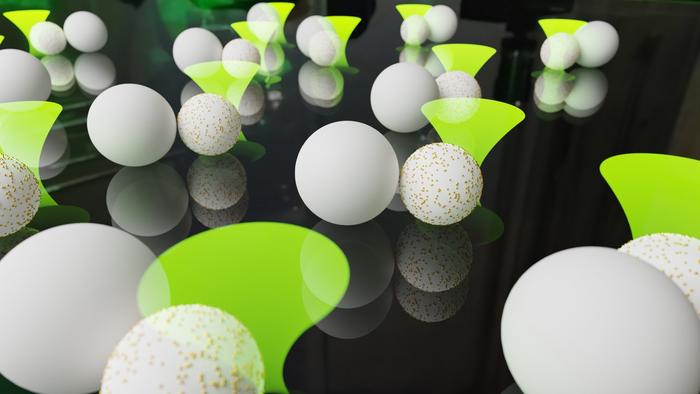Artificial intelligence using neural networks performs calculations digitally with the help of microelectronic chips. Physicists at Leipzig University have now created a type of neural network that works not with electricity but with so-called active colloidal particles. In their publication in the prestigious journal Nature Communications, the researchers describe how these microparticles can be used as a physical system for artificial intelligence and the prediction of time series.

Credit: Professor Frank Cichos
Artificial intelligence using neural networks performs calculations digitally with the help of microelectronic chips. Physicists at Leipzig University have now created a type of neural network that works not with electricity but with so-called active colloidal particles. In their publication in the prestigious journal Nature Communications, the researchers describe how these microparticles can be used as a physical system for artificial intelligence and the prediction of time series.
“Our neural network belongs to the field of physical reservoir computing, which uses the dynamics of physical processes, such as water surfaces, bacteria or octopus tentacle models, to make calculations,” says Professor Frank Cichos, whose research group developed the network with the support of ScaDS.AI. As one of five new AI centres in Germany, since 2019 the research centre with sites in Leipzig and Dresden has been funded as part of the German government’s AI Strategy and supported by the Federal Ministry of Education and Research and the Free State of Saxony.
“In our realization, we use synthetic self-propelled particles that are only a few micrometres in size,” explains Cichos. “We show that these can be used for calculations and at the same time present a method that suppresses the influence of disruptive effects, such as noise, in the movement of the colloidal particles.” Colloidal particles are particles that are finely dispersed in their dispersion medium (solid, gas or liquid).
For their experiments, the physicists developed tiny units made of plastic and gold nanoparticles, in which one particle rotates around another, driven by a laser. These units have certain physical properties that make them interesting for reservoir computing. “Each of these units can process information, and many units make up the so-called reservoir. We change the rotational motion of the particles in the reservoir using an input signal. The resulting rotation contains the outcome of a calculation,” explains Dr Xiangzun Wang. “Like many neural networks, the system needs to be trained to perform a particular calculation.”
The researchers were particularly interested in noise. “Because our system contains extremely small particles in water, the reservoir is subject to strong noise, similar to the noise that all molecules in a brain are subject to,” says Professor Cichos. “This noise, Brownian motion, severely disrupts the functioning of the reservoir computer and usually requires a very large reservoir to remedy. In our work, we have found that using past states of the reservoir can improve computer performance, allowing smaller reservoirs to be used for certain computations under noisy conditions.”
Cichos adds that this has not only contributed to the field of information processing with active matter, but has also yielded a method that can optimise reservoir computation by reducing noise.
Journal
Nature Communications
DOI
10.1038/s41467-024-44856-5
Method of Research
Experimental study
Subject of Research
Not applicable
Article Title
Harnessing synthetic active particles for physical reservoir computing
Article Publication Date
29-Jan-2024




